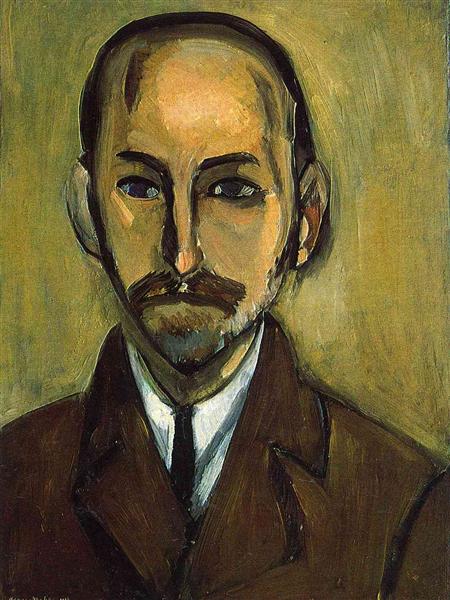Description
The work "Portrait of Michael Stein" by Henri Matisse, created in 1916, is a representation that captures not only the essence of the portrayed but also the spirit of the time and place in which it was conceived. This painting is not only a testament to Matisse's technical virtuosity but also a window into the influential relationship between the artist and the Stein siblings, notable art collectors and promoters of avant-garde talents in early 20th-century Paris.
In this composition, Matisse presents Michael Stein with a palette of sober colors, a decision largely influenced by the context of World War I that was ravaging Europe at the time. The predominant use of gray and brown tones conveys a seriousness and emotional depth that differs from the more vibrant and colorful works that characterize most of Matisse's opus. Michael Stein, who appears seated, emanates a posture of thoughtful serenity, with his gaze directed into the distance. His face, meticulously detailed, reflects an expression of introspection that seems to capture the complexity of his character.
The uniqueness of the painting lies in its compositional structure. The minimalist background, with just a few outlines of furniture and walls, stands in stark contrast to the detailed physiognomy of Michael. This contrast of simplicity and detail is key to understanding Matisse's intention to focus the viewer on the humanity of the character, stripping away any superfluous distractions. The technique used to define the body of the portrayed is equally notable: the firm and precise brushstrokes give a vibrant vitality to the figure, while the overall atmosphere of the work maintains a careful balance between sobriety and emotional intensity.
One of the most fascinating aspects of this work is the relationship between Matisse and Michael Stein. Michael and his wife Sarah Stein were among Matisse's first patrons, and their support played a crucial role in the development of his career. The mutual admiration between the artist and the collectors added a layer of emotional and personal complexity to their portraits. It is as if, through this painting, Matisse safeguarded an intimate testimony of the deep connection and gratitude he felt towards his friend and benefactor.
This portrait can also be seen within the context of the development of modern art of the time. Matisse, as one of the central figures of Fauvism, is known for his bold use of color and his break with conventional techniques. However, in "Portrait of Michael Stein" there is a clear adaptation to personal and contextual circumstances, opting for a representation of greater stillness and somber depth, which is nonetheless revolutionary in its own way. This work, although it may seem a deviation from Matisse's vibrant and exuberant pictorial style, is a testament to his versatility and ability to convey a vast range of human emotions.
In conclusion, "Portrait of Michael Stein" is not only a portrait of an important historical figure but also a masterpiece that synthesizes the essence of the moment in which it was created, the unique relationship between the artist and his subject, and Matisse's unparalleled ability to capture humanity on his canvases. This portrait stands as a fundamental piece to understand both the artist and his era, highlighting the depth and complexity that Matisse is capable of infusing into every work he creates.

